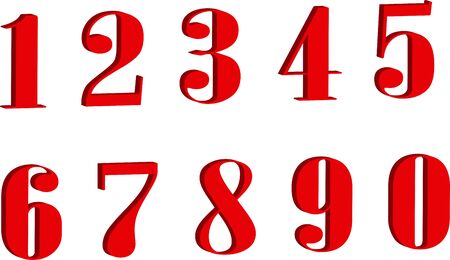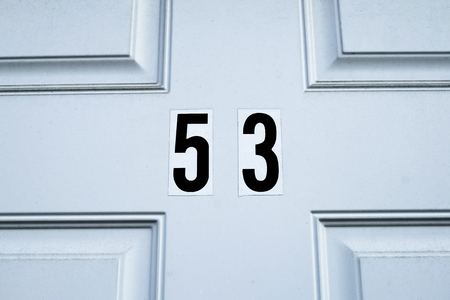Ancient Beginnings: The Druids and Celtic Prophecy
In tracing the roots of British seership, one must journey back to the mist-shrouded landscapes of ancient Britain, where the enigmatic Druids held sway over Celtic society. These learned figures were far more than mere priests; they stood as custodians of spiritual wisdom, guardians of sacred groves, and interpreters of the unseen world. The Druids’ role in Celtic communities was pivotal—they presided over religious ceremonies, guided tribal leaders with counsel drawn from omens and visions, and served as mediators between the earthly and the divine.
Their spiritual practices were deeply entwined with the rhythms of nature and the cycles of the moon and sun. Through elaborate rituals conducted in woodland sanctuaries, they sought communion with ancestral spirits and invoked the favour of gods and goddesses. The art of prophecy, or ‘fáith’, was revered among them; seers would gaze into water, study animal entrails, or listen to whispers on the wind, interpreting these signs as messages for their people. In this way, Druids acted as early prophets—visionaries whose insights shaped decisions in times of peace and war alike.
Though much about their practices remains cloaked in mystery due to a tradition of oral teaching and Roman suppression, echoes of Druidic wisdom persist within British folklore and myth. Their enduring legacy is evident in the reverence for sacred sites like Stonehenge and Avebury, where the ancient interplay between earth, sky, and spirit continues to inspire seekers today. Thus began the long lineage of British seers—rooted in nature’s embrace and nourished by a profound sense of otherworldly connection.
2. Medieval Seers: Wise Women, Wizards, and Folklore
The medieval period in Britain witnessed a remarkable evolution in the figure of the seer, whose role shifted from ancient tribal advisors to more localised and diverse manifestations. These mystics were found in every corner of the British Isles, often blending inherited pagan traditions with the rising influence of Christianity. Among these figures, hedge witches and cunning folk played a vital part in rural communities, offering practical wisdom, herbal remedies, and spiritual guidance. These wise women and men—known for their knowledge of the natural world—served as healers, midwives, and interpreters of omens, seamlessly weaving the mystical into everyday life.
The Role of Cunning Folk and Hedge Witches
Cunning folk and hedge witches held a respected, if sometimes precarious, position within their villages. Unlike court magicians or ecclesiastical scholars, their power derived from local trust and generations of folklore. They acted as intermediaries between the material and unseen worlds, drawing upon charms, potions, and age-old rituals to address ailments or ward off misfortune. Their lore was often passed down orally, ensuring that the wisdom of previous ages survived even during times of religious upheaval.
| Type | Main Abilities | Role in Community |
|---|---|---|
| Hedge Witch | Herbalism, protective charms | Healing, domestic protection |
| Cunning Folk | Dowsing, divination, curse-breaking | Solving mysteries, spiritual counsel |
| Wise Woman/Man | Dream interpretation, midwifery | Births, life guidance |
Legendary Figures: Merlin and Beyond
No discussion of medieval British mystics would be complete without mention of Merlin—the archetypal wizard immortalised in Arthurian legend. Merlin’s character embodies the fusion of druidic tradition with Christian symbolism; he is both prophet and sage. His prophecies shaped royal destinies and inspired countless tales throughout the centuries. Beyond Merlin stood many lesser-known yet influential figures who claimed visionary powers or second sight, continuing the legacy of prophecy.
Preservation Through Folklore
Despite periods of suppression and suspicion—especially under ecclesiastical scrutiny—the traditions surrounding seers persisted through British folklore. Tales told by firesides kept alive stories of prophetic dreams, fairy encounters, and miraculous healings. Oral transmission ensured that even as official history changed course, the mystical thread remained unbroken among ordinary people.

3. The Renaissance and Enlightenment: Astrology, Alchemy, and New Wisdom
As the medieval shadows began to recede, the British Isles found themselves swept into the vibrant currents of the Renaissance and Enlightenment. During these transformative centuries, there emerged a remarkable revival of magical arts, notably astrology and alchemy. Ancient knowledge, once preserved in monasteries or whispered among secluded wise folk, was rediscovered and celebrated within scholarly circles. The pursuit of wisdom no longer belonged solely to cloistered monks or rural cunning folk; it became the passion of philosophers, scientists, and noblemen alike.
In England, astrologers such as William Lilly gained both public fascination and royal patronage, weaving horoscopes that mingled celestial insight with political intrigue. Likewise, alchemists like John Dee—a learned advisor to Queen Elizabeth I—sought not only the fabled Philosopher’s Stone but also deeper spiritual truths hidden within nature’s mysteries. Their pursuits exemplified Britain’s unique approach: rather than shunning mysticism in favour of strict rationality, British thinkers often sought to harmonise the old magical arts with emerging scientific thought.
This period saw the birth of societies dedicated to exploration and experiment, such as the Royal Society, whose members debated the boundaries between magic and science with civility and curiosity. Libraries brimmed with treatises on planetary movements and esoteric symbolism; drawing rooms echoed with discussions on transmutation and cosmic influence. In this crucible of intellectual ferment, seers were no longer mere village soothsayers—they became learned men and women at the heart of Britain’s evolving identity.
The Renaissance thus marked a crucial turning point for British seers. No longer regarded as relics of a superstitious past, they stood at the crossroads of tradition and innovation—guardians of ancient lore and pioneers in a new age of enlightenment.
4. Victorian Spiritualism: Seances and Psychics in the Drawing Room
The 19th century in Britain marked a remarkable shift in the public’s engagement with the unseen world, as Victorian society became increasingly captivated by spiritualism and the promise of communication with those who had passed beyond the veil. Amidst rapid industrialisation and scientific progress, many Britons sought comfort and meaning through the occult, drawing on both ancient traditions and modern innovations.
At the heart of this movement was the séance—a gathering often held in genteel drawing rooms, where mediums claimed to channel spirits through table-rapping, automatic writing, or trance. These gatherings became fashionable among all social classes, from aristocratic ladies seeking solace for lost loved ones to intellectuals curious about the boundaries of existence.
| Aspect | Description |
|---|---|
| Mediumship | Individuals known as mediums acted as conduits between the living and the dead, often entering altered states to deliver messages from spirits. |
| Seances | Structured meetings where participants would sit in circles, sometimes holding hands, to foster a spiritual atmosphere and facilitate manifestations. |
| Psychic Societies | Organisations such as The Ghost Club (established 1862) and The Society for Psychical Research (founded 1882) emerged to investigate paranormal phenomena scientifically. |
| Public Fascination | Newspapers and periodicals regularly featured stories of hauntings, mysterious occurrences, and celebrated mediums. |
This era also saw a growing interest in codifying psychic abilities. Notable figures such as Daniel Dunglas Home dazzled audiences with levitation demonstrations, while others like Florence Cook were subject to both adulation and scepticism. The interplay between belief and doubt mirrored wider Victorian anxieties about faith, technology, and identity.
The enduring legacy of Victorian spiritualism lies not only in its peculiar rituals but in its contribution to British cultural life—a testament to the nation’s continued search for meaning within mystery. The fascination with seers evolved from private parlours into organised societies, laying foundations for future explorations into the mystical realms that continue today.
5. Twentieth-Century Mystics: From Occult Orders to Television Psychics
The twentieth century in Britain marked a dramatic transformation in the world of seership, shifting from the shadowed halls of secretive societies to the brightly lit studios of television broadcasters. This era witnessed a rich interplay between tradition and innovation as age-old esoteric wisdom met an increasingly modern, media-savvy society.
At the dawn of the century, London and other British cities buzzed with occult activity. Groups such as the Hermetic Order of the Golden Dawn and the Theosophical Society attracted intellectuals, poets, and curious seekers alike. Figures like Aleister Crowley and Dion Fortune became household names within these circles, their writings and rituals shaping much of what we recognise today as Western mysticism. Their work blended ceremonial magic with elements drawn from earlier Celtic and druidic lore, creating a distinctly British flavour of occultism.
Seership during this period was often kept behind closed doors—initiation rites and mystical teachings reserved for those deemed worthy. Yet, the tumultuous events of two world wars brought about a renewed public interest in spiritual matters. Spiritualist churches flourished, offering solace to those grieving lost loved ones. Mediums like Helen Duncan captured national attention with their séances, sparking both fascination and controversy across the land.
The post-war years heralded another shift, as advances in technology enabled new ways for seers to reach their audience. The rise of radio and television brought psychics and clairvoyants into living rooms across Britain. Charismatic personalities such as Doris Stokes became familiar faces on talk shows, where demonstrations of psychic ability were both celebrated and scrutinised under the gaze of an ever-growing public.
By the close of the twentieth century, seership had moved from exclusive enclaves to mainstream culture. Psychic hotlines, astrology columns in daily newspapers, and televised readings made mystical insight accessible to all. The archetype of the British seer was no longer confined to ancient groves or candlelit lodges but had become a figure at once traditional and contemporary—bridging the worlds of ancestral wisdom and modern media spectacle.
6. Contemporary Paths: Modern Seers and British Mysticism Today
In the present day, the mystical traditions of Britain have not faded into the mists of time but instead have found new expressions and adherents. The landscape of spiritual practice is rich and varied, with a multitude of paths available to those seeking insight and healing. Modern seers, often referred to as psychics, clairvoyants, or holistic therapists, continue to play a significant role in British culture. While their methods may differ from those of ancient Druids or medieval cunning folk, their purpose remains deeply rooted in the desire to guide, heal, and illuminate.
The Revival of Holistic Therapies
Across towns and cities, holistic therapies such as Reiki, crystal healing, and aromatherapy are flourishing. These practices combine ancient wisdom with contemporary understanding of mind-body wellness. Many practitioners regard themselves as inheritors of the seer’s tradition—acting as intermediaries between the physical and the unseen worlds. Such therapies are now commonly found in health centres, spas, and even some NHS settings, reflecting an openness to alternative approaches that resonates with Britains long-standing respect for personal intuition and natural remedies.
New Age Practitioners: A Modern Take on Ancient Wisdom
The New Age movement has also carved out a distinctive niche within British mysticism. Tarot readers at London’s markets, astrologers publishing horoscopes in national newspapers, and spiritual coaches offering guidance over cups of tea all contribute to a vibrant tapestry. While social media platforms have amplified their reach, these practitioners frequently draw inspiration from Celtic symbolism, Arthurian legends, and seasonal festivals—echoes of the island’s mythic past woven into contemporary lives.
The Enduring Legacy of Ancient Seers
The legacy of the ancient British seers endures in subtle but profound ways. Folklore remains alive in rural communities; local festivals honouring solstices and equinoxes are attended by people from all walks of life. Many Britons consult psychics or mediums during periods of uncertainty or grief—a modern echo of seeking wisdom from village wise-women or Druidic elders. In literature and popular culture, mystics continue to captivate the national imagination, offering both comfort and challenge in times of change.
Ultimately, while methods have evolved and cultural attitudes have shifted, the essential quest for meaning, connection, and understanding persists. Today’s British mystics carry forward a tradition that honours both ancient roots and modern sensibilities—a testament to the enduring spirit of Britain’s seers.


